{english below} En este especial de fotografía tenemos la suerte de contar con Hugh Holland, uno de los fotógrafos que fue pionero en fijarse en el skate. A él le debemos las imágenes mas icónicas del principio de esta cultura, una imágenes que no han perdido la vigencia ni la fuerza a lo largo de estos años . Con él hablamos de la pasión de hacer fotografías y de contar historias, de la importancia de estar en el momento adecuado y de saber dejarse llevar para poder sumergirse en ese algo nuevo que era el skate.
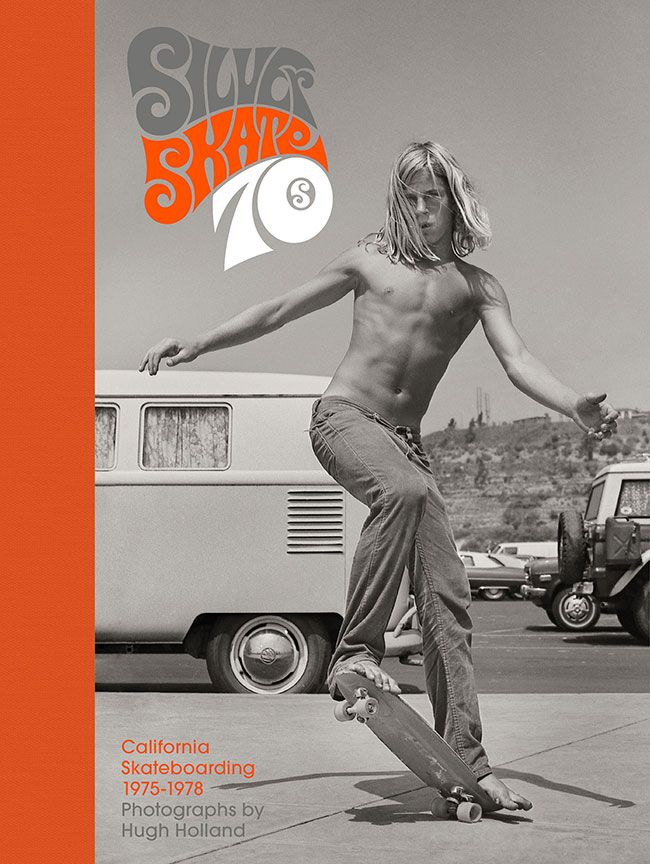
Cuentas que una tarde de 1975 te encontraste a unos chicos sobre un trozo de madera con ruedas ¿qué es lo que te llamó tanto la atención como para coger la cámara?
La verdad es que no recuerdo haber dicho esas palabras. Bueno, en realidad creo que ni siquiera recuerdo la primera vez que vi a unos chicos patinando, pero lo que está grabado en mi memoria es la vez que los vi ir en vertical por primera vez. Estaba conduciendo por una carretera en un desfiladero en las colinas de Hollywood, y a un lado, fuera de la carretera, vi patinadores que parecían estar subiendo de repente del nivel del suelo, y luego volviendo a bajar y desapareciendo. Tenía mi cámara en el asiento de al lado, así que encontré una calle lateral para aparcar y volví a bajar hasta donde vi todo eso. Ese fue el comienzo de una aventura de tres años. Yo tenía una cámara, y ellos querían fotos porque cada día rompían nuevos límites, y la emoción era palpable. ¡Desde entonces fotografié a los patinadores y su mundo callejero de California durante todo mi tiempo libre!
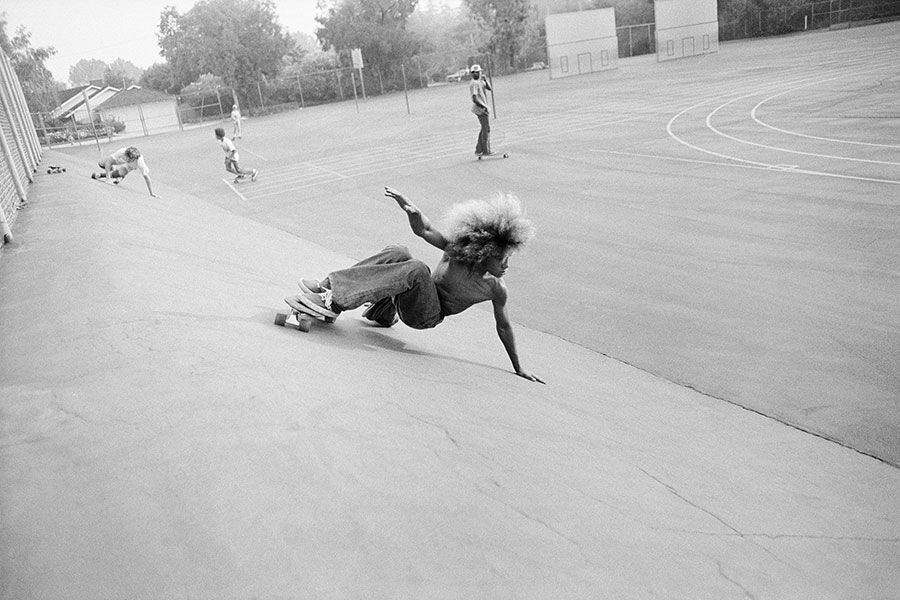
Tus fotografías transmiten mucha autenticidad y como la buena fotografía documental transmiten muy bien el espíritu de la época ¿qué recuerdos tienes de esas primeras sesiones fotográficas?
Tantos recuerdos que no sé por dónde empezar. Pero lo que desencadenan mis recuerdos de esos tiempos es mirar las miles de fotos que hice. Hay un dicho: “Cada foto cuenta una historia”, y creo que eso es ciertamente la verdad para mí. Las fotos son mi diario y el de la época. Me gusta hacer fotos que cuenten una historia, que parezcan una escena rápida de un película. Cuando funciona bien, el espectador hace su propia historia para acompañarla, o si no me preguntan ¿qué estaba pasando allí? y estoy tentado de decir “¿y tú qué piensas?” Mucha gente, especialmente aquí, donde ocurrió, conoce la escena, y los mayores están nostálgicos de los buenos días de la “vieja escuela” y los más jóvenes han oído todo sobre esos días y también les encanta ver las fotos.
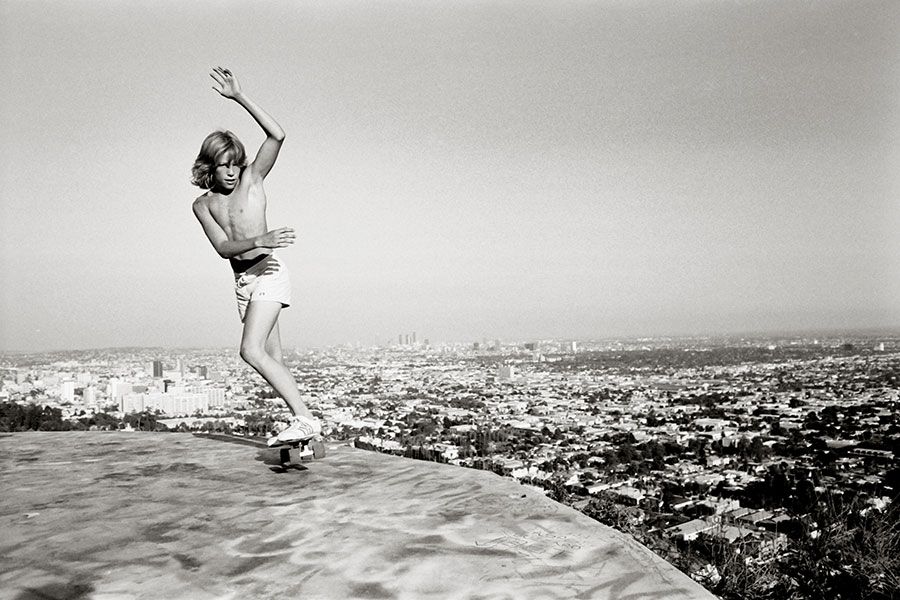
Fuiste rápidamente aceptado entre los skaters ¿te ayudó eso a hacer las fotos más naturales?
Absolutamente ¡acabé por convertirme en parte del hormigón del que estaban rodeados! Me encantaba ser lo más invisible posible, y después de un tiempo, era casi como si no supieran que estaba allí. Yo era el que estaba tendido de espaldas en el fondo de la piscina con tablas volando sobre mi cabeza.
¿Qué es lo que crees que tienen tus fotografías para que después de tantos años sigan siendo tan interesantes?
Creo que es, como dije, nostalgia por la gente que vivió esos tiempos, y por lo que respecta a los más jóvenes, tal vez es una especie de nostalgia también, porque han oído todo sobre los años 70 una y otra vez.

¿Cómo fue tu acercamiento a la fotografía? ¿en ese momento no eras profesional?
No, no era un profesional en absoluto. Tenía otro trabajo. Estaba muy interesado, pero era como un hobby intenso. Ellos se divertían, y yo me divertía documentando la escena.
Has comentado que te dejó de interesar el skate cuando éste empezó a hacerse tan comercial¿qué fue exactamente lo que te dejó de interesar?
Cuando empecé a hacer fotos en el 75, lo que me llevó a querer documentarlo todo fueron las impactantes imágenes de “The Wild boys” haciendo sus cosas ¡y ni siquiera ellos sabían con certeza qué era lo que estaban haciendo! Cada día era una nueva aventura, y un nuevo límite superado. El verano del 75 fue así, y es cuando creo que obtuve la mayoría de las mejores imágenes. El 76 también fue bueno, pero para principios del 78, definitivamente empecé a perder interés. Cambió rápidamente desde mi punto de vista. Vagabundos sin camisa y descalzos de la calle se convirtieron en profesionales, con logotipos y cascos y rodilleras por todas partes. La comercialización había llegado y no era lo mismo a mis ojos.
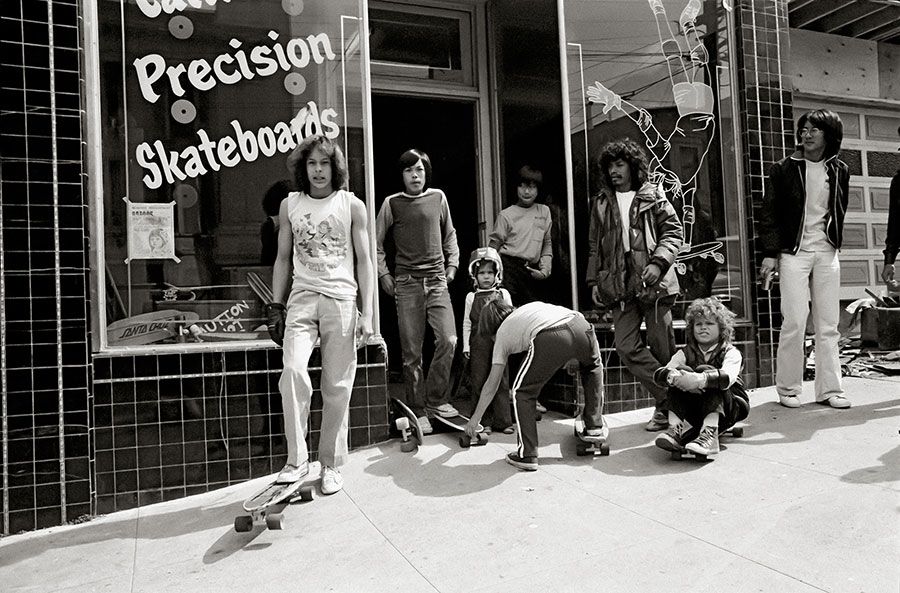
Es raro ver este compromiso con tu propio trabajo y dice mucho ¿recibiste ofertas para comercializar tu trabajo?
Sí, unas cuantas, y trabajé un poco como freelance para una revista, pero no mucho.
¿Actualmente sigues interesado en la fotografía de skate?
Hoy en día, cuando escucho el viejo y familiar sonido de las ruedas de patines en el cemento, siempre me giro para mirar, y por lo general tengo mi cámara conmigo, pero no soy un fotógrafo de skate y no creo haberlo sido nunca. Para responder a la pregunta, estoy interesado como siempre en lo que venga delante de la lente! Pero no, no he sido un fanático del skate desde hace 45 años!
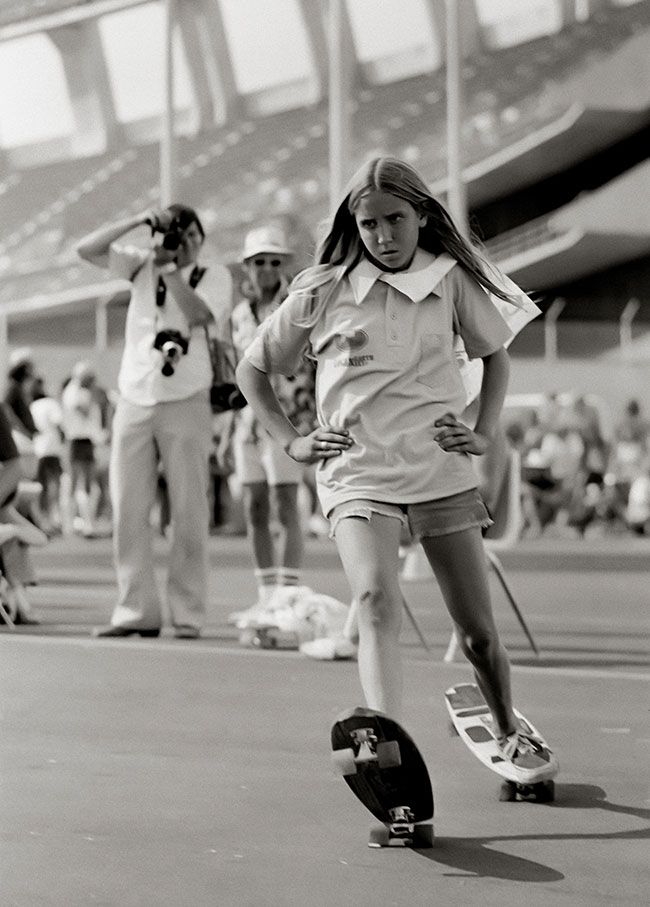
En el 2006 sacaste a la luz este trabajo ¿por qué tardaste tanto?
No lo sé. Sólo estaba haciendo otras cosas. Hizo falta que otras personas vinieran a mí, finalmente y me encontraran a mí y a mi trabajo.
A finales de los 60 estuviste viviendo un año en España ¿qué experiencia visual sacaste de esta instancia?
Aprendí más en ese año, que en cualquier otro momento de mi vida. Cuando el vagabundo era yo tuve un sinfín de experiencias visuales y es realmente una lástima que no hiciese muchas fotos. Tenía una cámara, pero estuve sin dinero la mayor parte de ese año, por lo que no podía permitirme ni los carretes ni el procesado. Tomé muy pocas fotos, pero tampoco tuve el gran impulso todavía. Eso llegó unos años después.
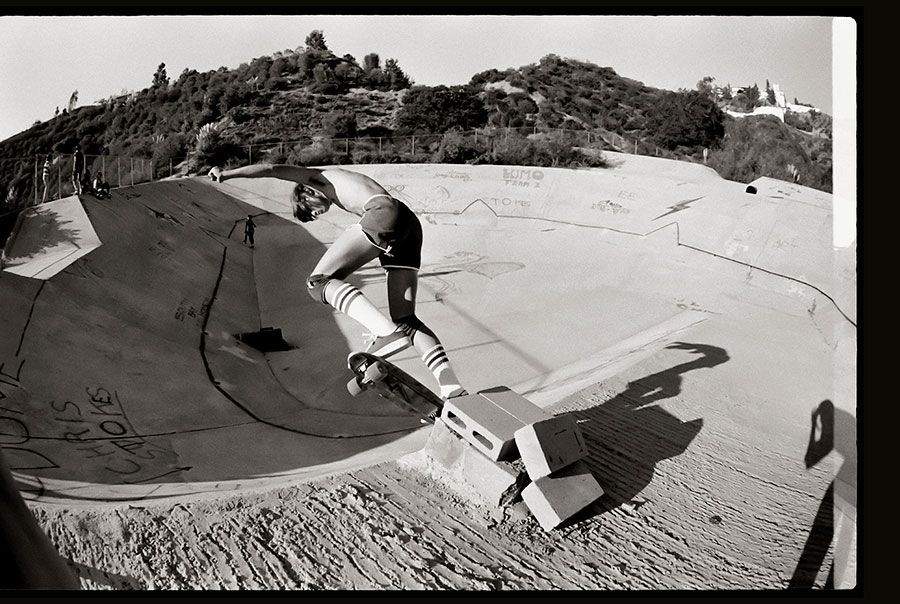
En tus fotografías es como si el universo girara alrededor del objetivo de tu cámara, me recuerda al mejor Winogrand ¿cuáles eran tus referencias en la fotografía de calle?
¡El mejor Winogrand! ¡Gracias! ¡Me encanta el trabajo de Winogrand! No tenía muchos referentes que yo recuerde cuando estaba empezando pero a lo largo de los años he tenido bastantes. Uno de mis primeros favoritos en los años 70 fue Will McBride, y lo conocí mucho más tarde, en Berlín, en 2012, no mucho antes de que muriera.
¿ Actualmente cuál es la fotografía que te interesa?
Siempre me ha gustado lo que se llama fotografía de calle, y todavía me gusta.
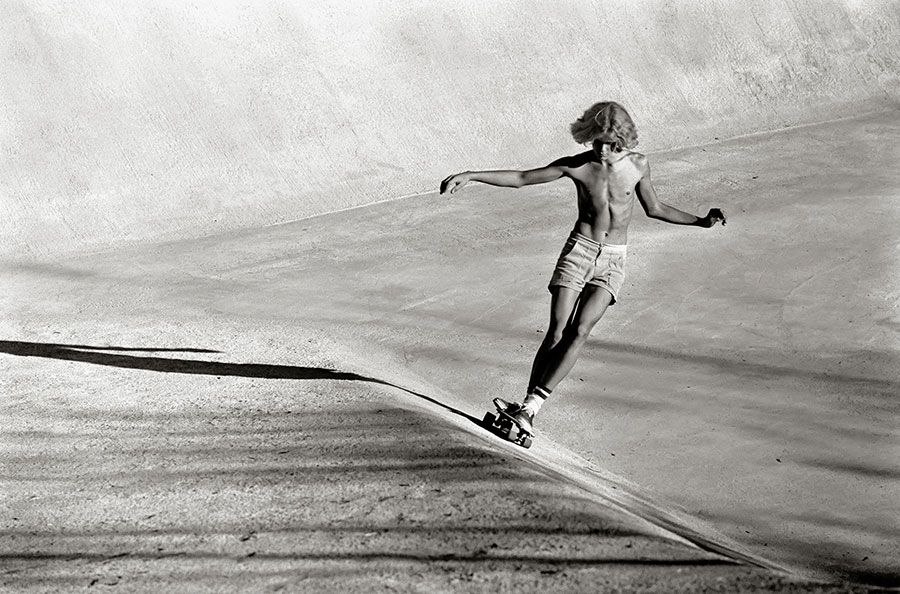
Si fuéramos capaces de mirar la esencias de las fotografías ¿crees que servirían para conocer el YO de un fotógrafo?
Definitivamente estoy convencido de que sí.
¿Qué crees que dicen de ti tus fotografías?
Es una pregunta difícil. No lo sé. Creo que es más una pregunta para los espectadores de mis fotografías.
Es muy poderosa la presencia física en tus fotografías ¿es esa plasticidad corporal algo buscado en tus fotografías?
Lo que ves es lo que tienes. Y sí ¡lo que ves es lo que yo busco!
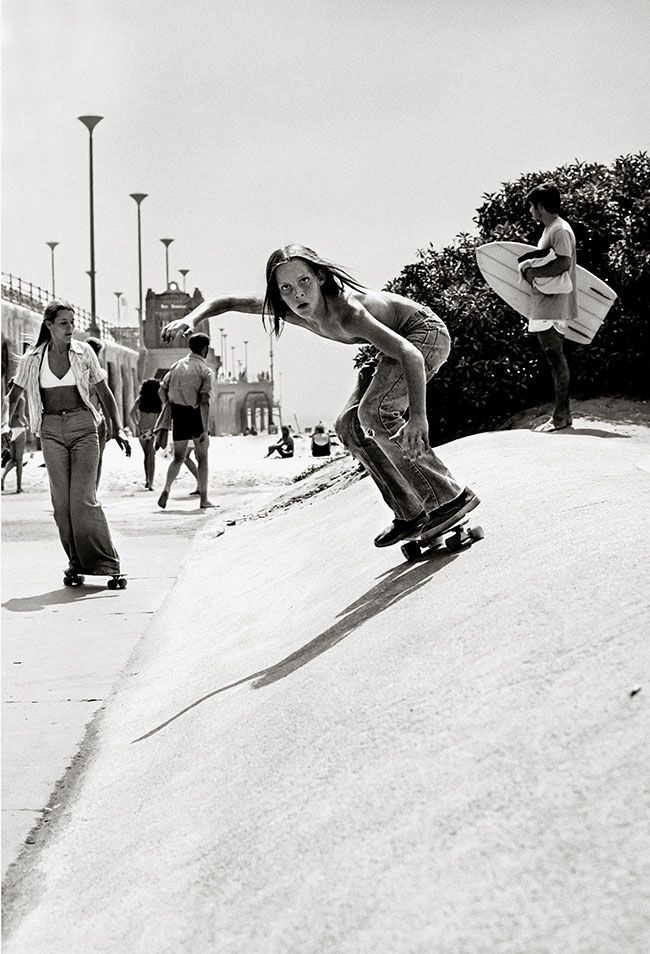

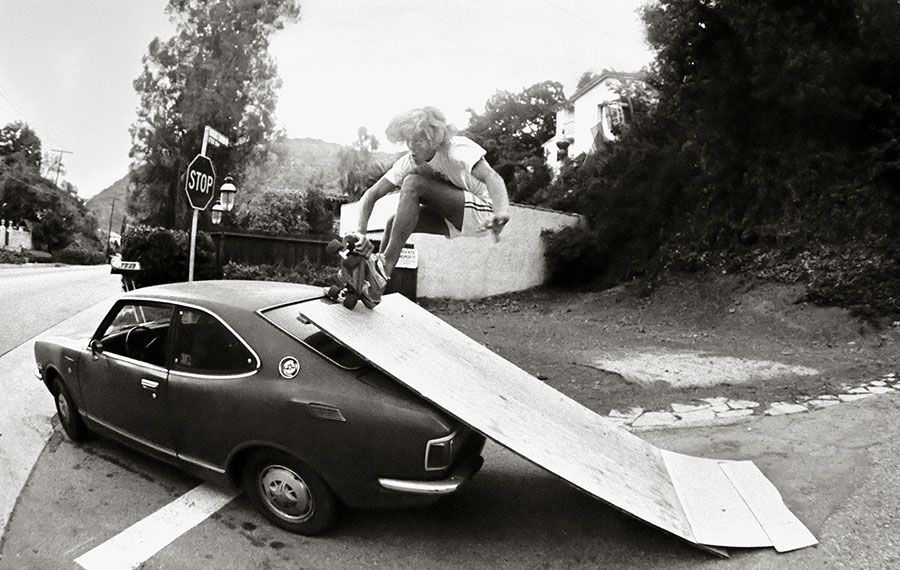
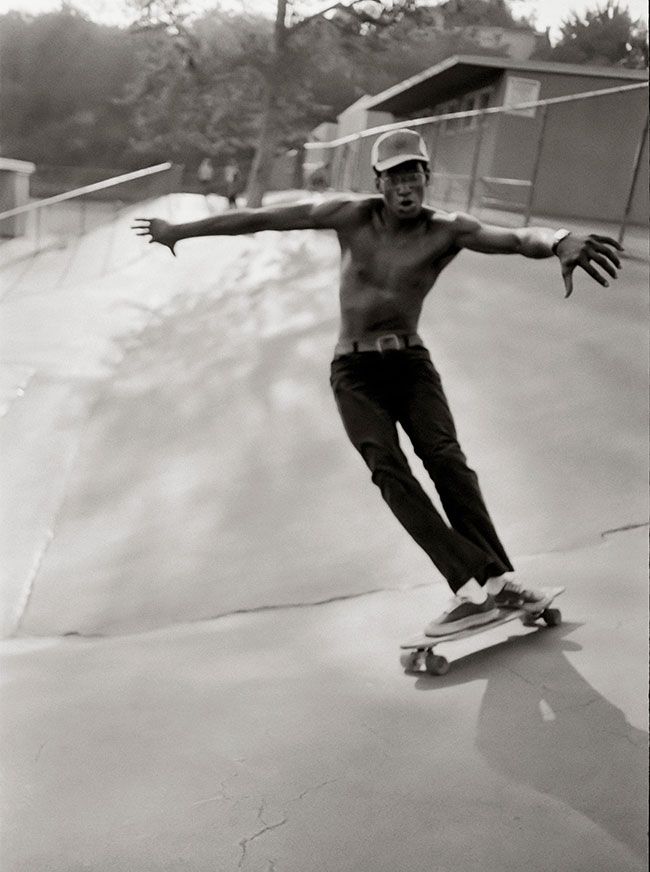
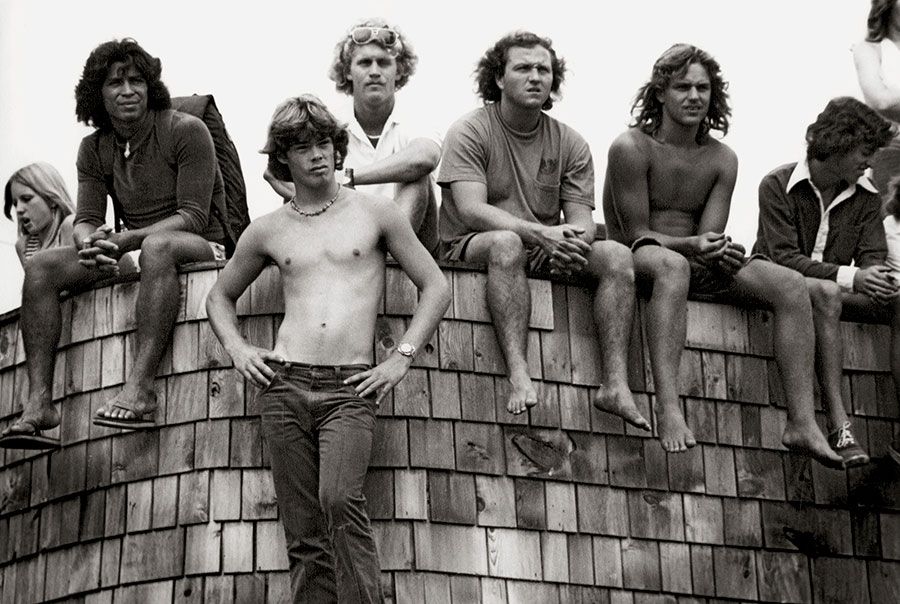
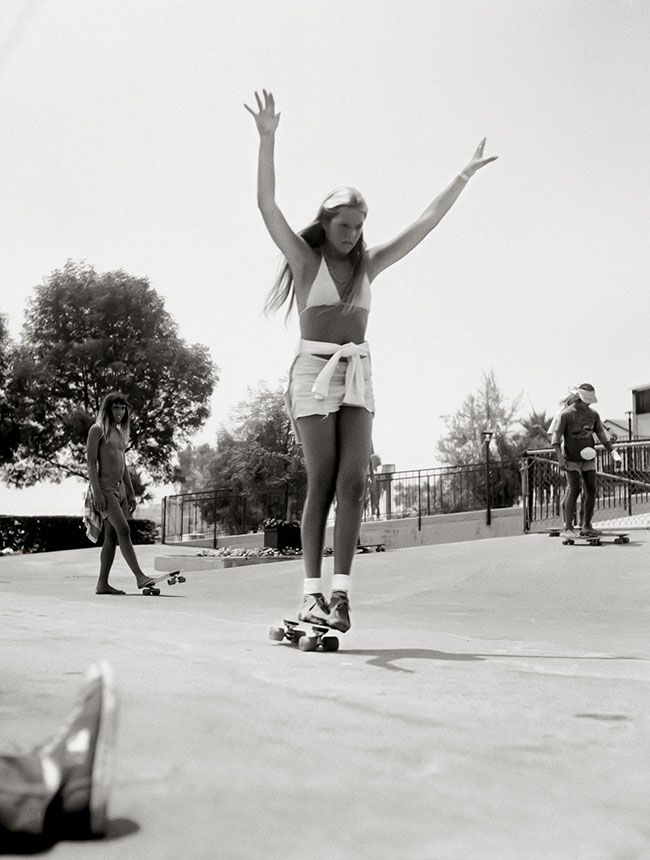


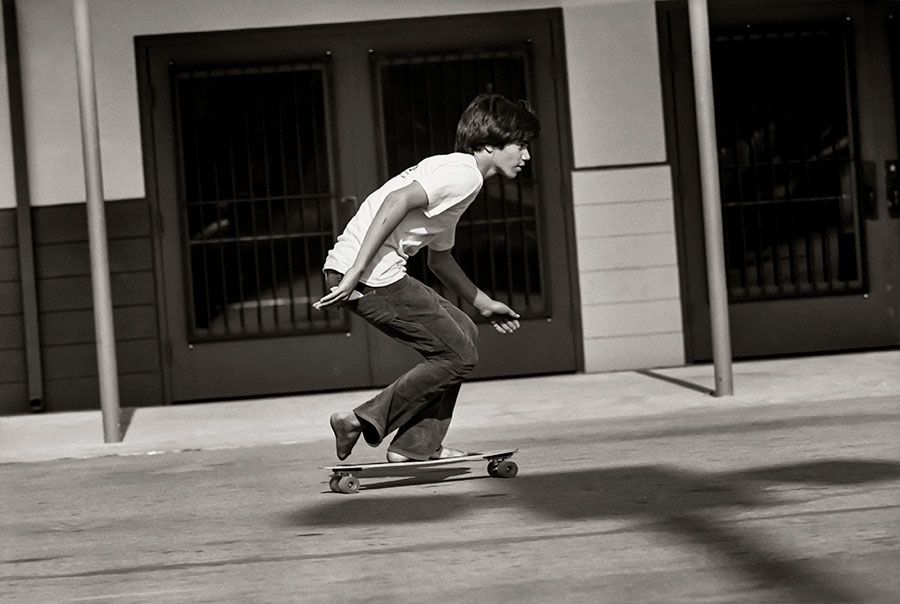

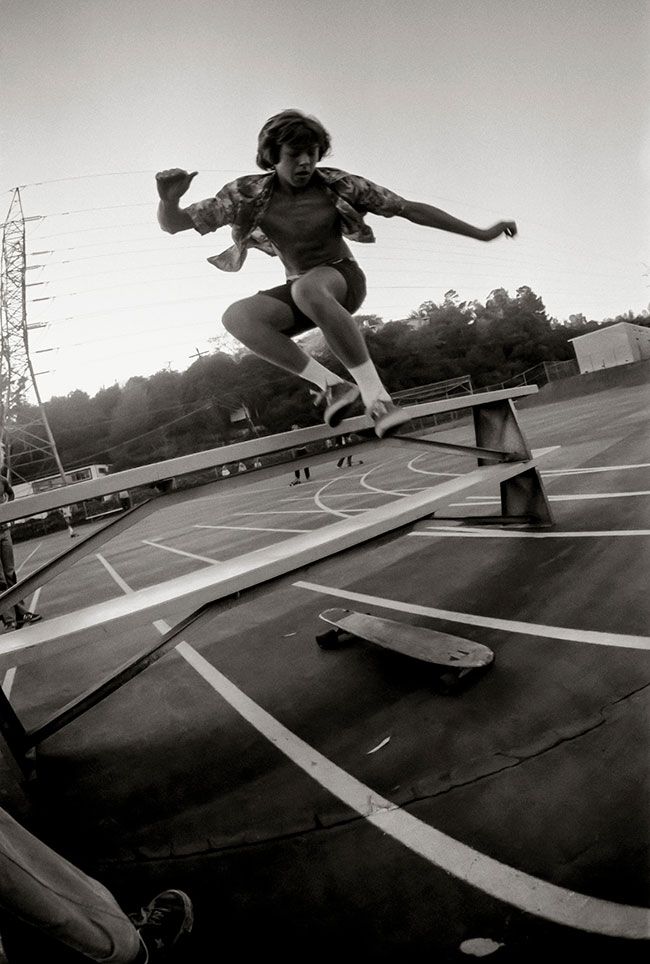
English:
Hugh Holland: the weightlessness of the bodies.
In this photo special we are lucky to have Hugh Holland, one of the photographers who pioneered the skateboarding scene. We owe him the most iconic images of the beginning of this culture, images that have not lost the validity and strength over the years. We talked about the passion of taking pictures and telling stories, the importance of being in the right moment and knowing how to let yourself go in order to immerse yourself in that new thing that was skateboarding.
You say that one afternoon in 1975 you met some kids on a piece of wood with wheels. What caught your attention so much that you took the camera?
Kids on a piece of wood with wheels? I don’t remember saying those words! Well, I don’t remember the first time I saw kids on skateboards, but what is engraved on my memory is the time I saw them going vertical for the first time. I was driving up a canyon road in the Hollywood hills, and over to the side, off of the road, I saw skaters that just looked like they were riding suddenly up out of ground level, and then going back down and disappearing. I had my camera on the seat beside me, so I found a side street to park on, and walked back down to where I saw all that.
That was the start of a three year adventure. I had a camera, and they wanted pictures because every day they were breaking new boundaries, and the excitement was palpable. I was photographing skateboarders and their California street world during all my free time from then on!
Your photographs transmit a lot of authenticity and like good documentary photography transmits very well the spirit of the time, what memories do you have of those first photo sessions?
So many memories that I don’t know where to begin. But what triggers my memories of those times is looking at the thousands of photos I took. There is a saying; “Every picture tells a story”, and think that is certainly the truth with me. The pictures are my journal and diary of the time. I like to do photos that tell a story, that look like a quick scene from a movie. When it works well, the viewer makes his or her own story to go with it, or else they ask me, what was happening there? And I’m tempted to say, “What do you think?” A lot of people, especially here, where it happened, know the scene, and the older ones are nostalgic about the good “old school” days and the younger ones have heard all about those days, too, and love seeing the photos.
You were quickly accepted among the skateboarders, did that help you to make the photos more natural?
Oh absolutely. I just became part of the concrete they were surrounded by! I loved to be as invisible as possible, and after awhile, it was almost like they didn’t know I was there. I was the one laying on my back on the bottom of the swimming pool with boards flying over my head.
What is it that you think your photographs have so that after so many years they are still so interesting?
I think it is, as I said, nostalgia for the people that lived through those times, and for younger ones, maybe it’s a kind of nostalgia too, because they’ve heard all about the 70s over and over.
How was your approach to photography? Were you not a professional at that time?
No, I was not a professional at all. I had another job for that. I was just very intensely interested in doing it, but it was like an intense hobby. They were having fun, and I was having fun documenting the scene.
You said that you stopped being interested in skateboarding when it started to become so commercial. What exactly was it that stopped you from being interested?
When I started shooting in 75, what drew me to want to document it all were the striking visuals of “the wild boys” doing their thing, and not even they knew for sure what it was they were doing! Every day was a new adventure, and a new limit surpassed. The summer of 75 was like that, and that’s when I think I got most of the best images. 76 was good also, but by the first of 78, I definitely started losing interest. It changed quickly in my perception. Shirtless, barefoot vagabonds of the street became professionals, with logos and helmets and kneepads everywhere. Commercialization had arrived and it wasn’t the same in my eyes.
It is rare to see this commitment to your own work and it says a lot. Did you receive offers to commercialize your work?
Yes, a few, and I did a little bit of freelancing for a magazine, but not much.
Are you still interested in skateboarding photography today?
Today, when I hear the old familiar sound of skate wheels on concrete, I always turn to see, and I usually have my camera with me, but I’m not a skateboard photographer and I don’t think I ever was. To answer the question, I’m just interested as always in whatever comes in front of the lens! But no, I haven’t been such a fanatic about skateboarding since 45 years ago!
In 2006 you brought this work to light, what took you so long?
I don’t know. I was just doing other things. It took other people coming to me, finally and finding me and my work.
In the late 60’s you lived in Spain for a year. What visual experience did you get from this time?
I learned more in that year, than in any other time of my life. That when it was me that was the vagabond (Vagabundo) I had endless visual experiences and it is really too bad that I didn’t take many photos. I had a camera, but I was penniless most of that year, so I couldn’t afford film and processing. I took a very few photos, but I just didn’t have the great urge yet, either. That came a few years after.
In your photographs it’s as if the universe revolved around the lens of your camera, it reminds me of the best Winogrand. What were your references in street photography?
The best Winogrand! Thank you! I love Winogrand’s work!I didn’t have many references that I can remember when I was starting. As I went along through the years I have had quite a few. One of my first favorites back in the seventies, was Will McBride, and I got to meet him much later, in Berlin, in 2012, or so, not long before he died.
What kind of photography interests you at the moment?
I’ve always been into what you would call street photography, and still am.
If we were able to look at the essence of the photographs, do you think they would serve to know the self of a photographer?
Yes, I definitely think so.
What do you think your photographs say about you?
That’s a tough question. I don’t know. I think it’s more of a question for the viewers of my photographs.
The physical presence in your photographs is very powerful. Is that body plasticity something you look for in your photographs?
What you see is what you get. And yes, what you see is what I look for!